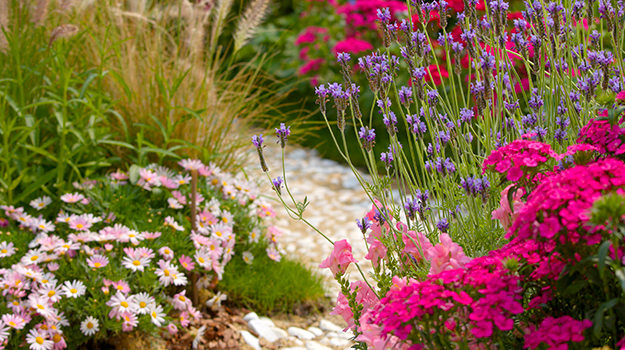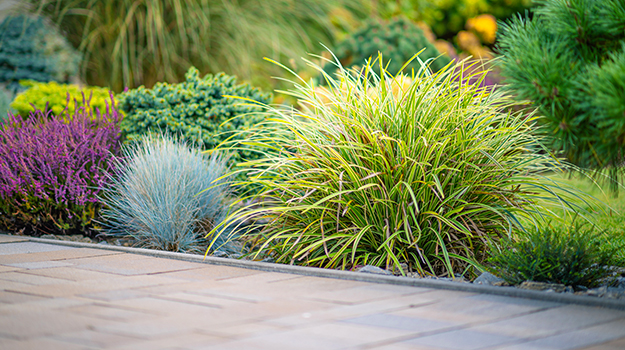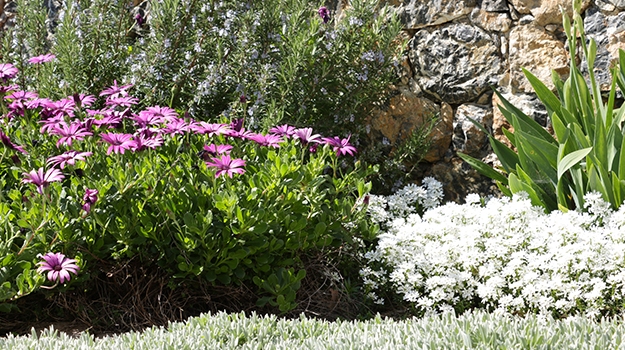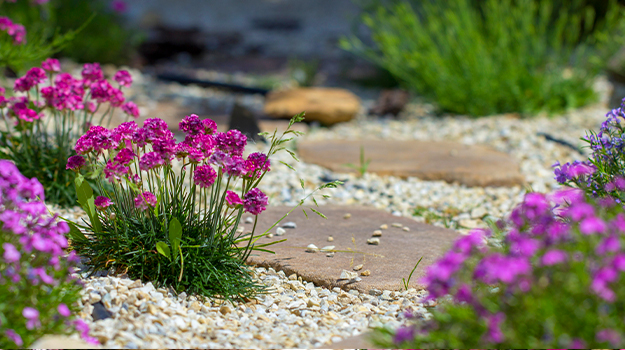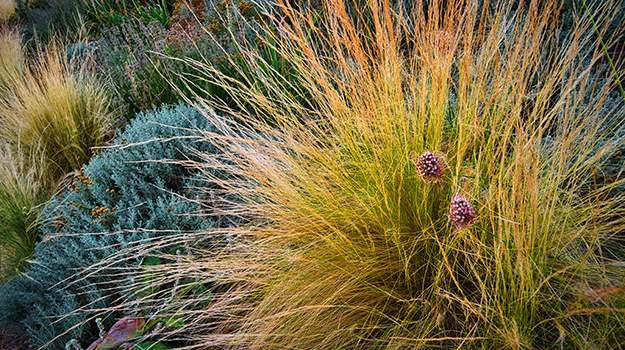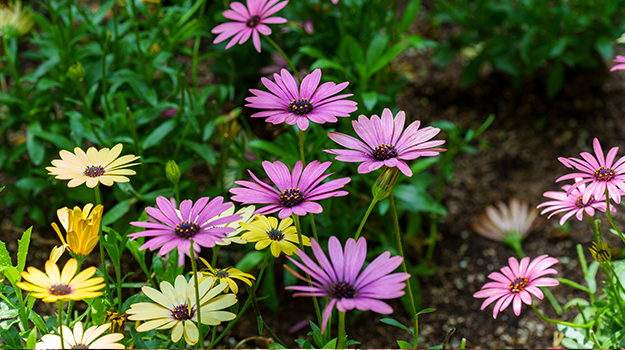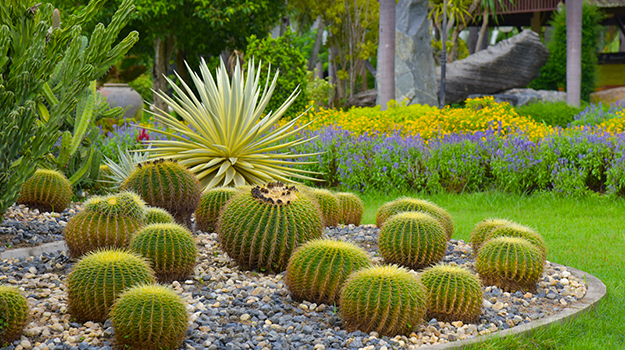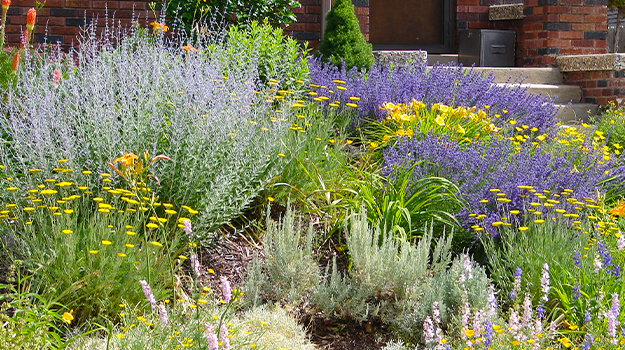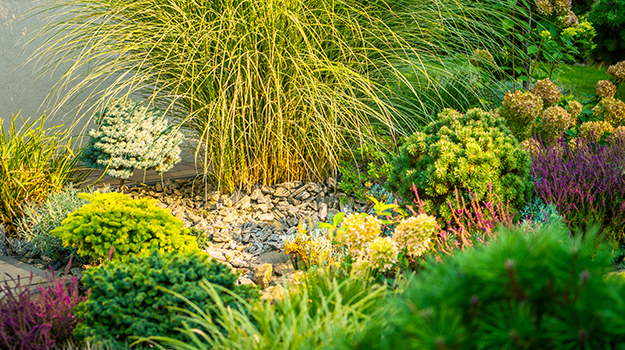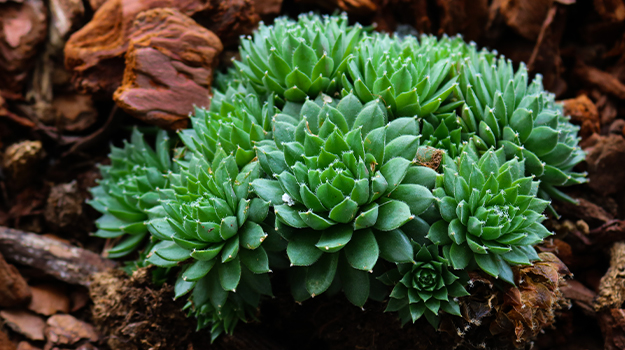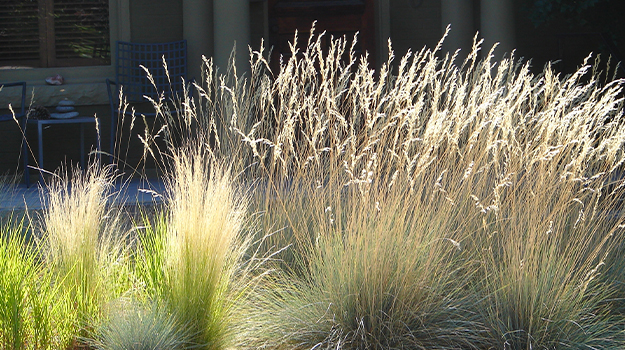Growing in popularity, you often notice it without knowing exactly how to describe it. Xeriscape design takes different forms to appeal to everyone, and some gardeners are implementing it... without even realizing it.
Save water in the garden: the benefits of xeriscape design
Climate change poses increasing challenges for gardens. Fortunately, there are some great adaptable solutions. We can choose resilient plants, improve water management and create shaded areas to cope with extreme temperatures and better weather periods of drought.
At one point mostly seen in regions with arid climates, coastal gardens, with their specific conditions, or environments difficult to plant, the xeriscape now is finding its way into more and more gardens.
Global warming, with its repeated heat waves and increasingly long periods of drought, is certainly associated with this new trend. But also, water use restrictions and ecological considerations related to water conservation are certainly contributing factors.
And what if we added to this the fact that the xeriscape is virtually maintenance-free, relatively unaffected by Mother Nature's changing moods and provides access to an impressive selection of plants? That's all it takes to capture your attention!
Dry garden and xeriscape: one and the same?
Dry gardening and xeriscape design are similar in that both rely on practices that minimize water use in the garden.
To make a distinction, let's say that the dry garden emphasizes rocks and stone elements, which generally occupy a much more important place than plants. Xeriscaping is rather a layout that minimizes water consumption by using plants adapted to the local climate.
Both aim to thrive with little water and feature drought-tolerant plants.
What is a xeriscape design?
A xeriscape, like a dry garden, is characterized by its ability to flourish throughout the seasons without the need for watering. Rain is sufficient. This style of garden requires very little maintenance, as it often only requires cleaning up after winter.
It consists of drought-tolerant plants capable of withstanding the highest summer temperatures experienced in a region. Once the plants are well established, their roots become deeply anchored in the soil, where they draw the moisture that they need to survive. Some can store water in their tissues and take advantage of the slightest dew to build up reserves.
Automatic watering is not recommended. Plants that survive with little water hate constantly wet soil.
TIP: In regions with abundant rainfall, an alpine-style garden is more likely to be preferred. When properly designed, its varying elevations promote better drainage and limit water saturation.
How to create a xeriscape
A xeriscape can take on different appearances depending on where it is installed and how it is arranged: stony slope, rockery, gravel garden. However, it is not an alpine garden or a rockery. What differentiates and characterizes it best is the way in which the stone element takes precedence over the plants, even when ground covers are very present.
Its clean design easily integrates into a modern, minimalist or industrial style. Simply add many grasses to perfectly complement a Scandinavian, Craftsman or farmhouse style. Its refined yet natural style also enhances country homes and seaside landscapes.
In terms of design, xeriscaping allows you to create according to individual needs and tastes. You can define relaxation areas, create a dining area and incorporate decorative or functional elements: paths, stone walls, statues or ornaments made from natural materials.
Also consider adding elevations. Not only do they break up the monotony and add dimension, but they also improve drainage and, if necessary, channel water to more water-hungry plants.
What are the necessary conditions for creating a xeriscape?
The plants that make up a xeriscape generally do not survive long in heavy or poorly drained soil. They prefer porous, well-drained soil, even rocky or sandy terrain. If these conditions are not met, the soil can be lightened and its composition modified by amendments, but this will require work and constant readjustments.
Xeriscapes are generally established in sunny areas since most of the plants they contain require many hours of sunlight each day. Porous or stony soil in partial shade can be considered, provided you are careful to choose plants that tolerate this exposure.
Xeriscaping in warm or temperate climates
In warmer regions, xeriscapes often feature plants found in Mediterranean gardens: olive trees, lavender, mimosa, datura, lantana, plumbago, hibiscus, oleander and bougainvillea.
The foliage is often grey and silver. This allows them to reflect light to protect themselves from the heat.
To prevent their colours from being washed out by the sun, flowers adopt ultra-bright shades to ensure they are seen by pollinators. The more discreet ones will compete by offering a strong fragrance, such as lavender and rosemary.
Xeriscaping in northern regions
To create a xeriscape in cold climates, look for resilient plants that can withstand extreme temperature variations, resisting both prolonged drought and freezing temperatures.
Alpine plants are often the best options. This doesn't necessarily mean an alpine garden, as it tends to mimic mountain landscapes, which isn't the case here. Once again, a light, permeable soil that ensures rapid drainage regardless of the season is the key to success.
When to plant a dry garden or create a xeriscape?
Once established, the plants require virtually no care, but before that, they will still need time to adapt. This is why planting is ideal in early fall. This gives them time to establish roots before braving the winter, and the spring rains will prepare them to withstand the summer drought.
Use MYKE when planting, for a quick establishment.
What soil for a dry garden or xeriscape?
By combining the right potting soil with proper water management, you can create a thriving and attractive xeriscape. PRO-MIX soil mixes contain sphagnum peat moss, peat humus, coco fibre and perlite, which help lighten the soil and improve its structure to promote water retention and optimize drainage.
Also try our professional line products (available as economical compressed packs):
PRO-MIX HP®
Thanks to its high concentration of perlite, it is ideal for drought-tolerant plants and warm climates, as it allows for better drainage and optimal soil aeration.
PRO-MIX BIOFUNGICIDE™ + MYCORRHIZAE™
This product contains mycorrhizae, which help plants better absorb water and nutrients. Particularly useful in arid environments!
Cover the soil with an organic mulch like bark chips or a mineral mulch like decorative stones. This not only increases the appeal of your landscape, but also limits weed growth, slows soil moisture evaporation and regulates soil temperature.
How to maintain a xeriscape?
Given that its soil doesn't retain water and its plants rarely need watering, xeriscape design saves valuable time when it comes to garden maintenance.
The plants chosen are little demanding and rarely need to be fertilized. As a bonus, many are fragrant (think lavender!) and use their fragrance to repel pests.
So, maintenance is generally as simple as cleaning up debris and broken branches after winter and pruning your plants occasionally if you need to control their growth. The ideal garden for busy people!
PRO TIP: In case of prolonged drought, water thoroughly to encourage the roots to grow deep into the soil. However, make sure the water doesn't stagnate to avoid drowning the roots.

